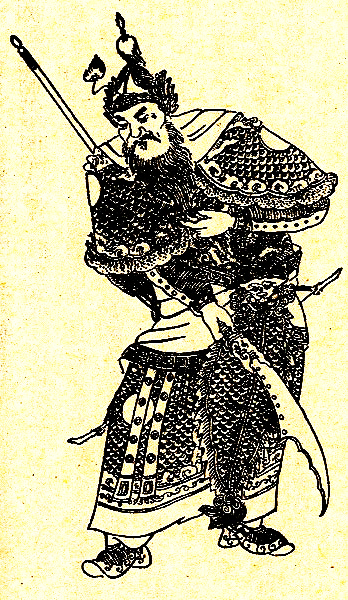|
Ooi (other)
OOI or Ooi may refer to: * Ocean Observatories Initiative, a National Science Foundation Division of Ocean Sciences program * Huang (surname), a Chinese surname * Oosterhoff type I (OoI), a category of globular cluster A globular cluster is a spheroidal conglomeration of stars. Globular clusters are bound together by gravity, with a higher concentration of stars towards their centers. They can contain anywhere from tens of thousands to many millions of membe ...s * In Japanese, ōi is sometimes written as ooi {{disambiguation ... [...More Info...] [...Related Items...] OR: [Wikipedia] [Google] [Baidu] |
Ocean Observatories Initiative
The Ocean Observatories Initiative (OOI) is a National Science Foundation (NSF)br>Major Research Facilitycomposed of a network of science-driven ocean observing platforms and sensors ( ocean observatories) in the Atlantic and Pacific Oceans. This networked infrastructure measures physical, chemical, geological, and biological variables from the seafloor to the sea surface and overlying atmosphere, providing an integrated data collection system on coastal, regional and global scales. OOI's goal is to deliver data and data products for a 25-year-plus time period, enabling a better understanding of ocean environments and critical ocean issues. History As early as 1987, the ocean sciences community began discussions about the science, design concepts, and engineering of ocean research observatories, leading to the formation of the International Ocean Network (ION) in 1993. The ION national committee was formed in 1995 and later expanded into the Dynamics of Earth and Ocean Systems ... [...More Info...] [...Related Items...] OR: [Wikipedia] [Google] [Baidu] |
Huang (surname)
Huang (; ) is a Chinese surname that originally means and refers to jade people were wearing and decorating in ancient times. While ''Huáng'' is the pinyin romanization of the word, it may also be romanized as Hwang (Korean surname), Hwang, Wong (surname), Wong, Waan, Wan, Waon, Hwong, Vong, Hung, Hong, Bong, Eng, Ng (name), Ng, Uy (surname), Uy, Wee, Oi, Oei, Oey, Ooi, Ong, or Ung due to pronunciations of the word in different dialects and languages. It is the 96th name on the ''Hundred Family Surnames'' poem.K. S. Tom. [1989] (1989). Echoes from Old China: Life, Legends and Lore of the Middle Kingdom. University of Hawaii Press. . This surname is known as Hwang (Korean name), Hwang in Korean language, Korean. In Vietnamese language, Vietnamese, the name is known as Hoàng or Huỳnh. Huang is the 7th most common surname in China. Huynh is the 5th most common surname in Vietnam. The population of Huangs in China and Taiwan was estimated at more than 35 million in 2020; it was a ... [...More Info...] [...Related Items...] OR: [Wikipedia] [Google] [Baidu] |
Globular Cluster
A globular cluster is a spheroidal conglomeration of stars. Globular clusters are bound together by gravity, with a higher concentration of stars towards their centers. They can contain anywhere from tens of thousands to many millions of member stars. Their name is derived from Latin (small sphere). Globular clusters are occasionally known simply as "globulars". Although one globular cluster, Omega Centauri, was observed in antiquity and long thought to be a star, recognition of the clusters' true nature came with the advent of telescopes in the 17th century. In early telescopic observations globular clusters appeared as fuzzy blobs, leading French astronomer Charles Messier to include many of them in his catalog of astronomical objects that he thought could be mistaken for comets. Using larger telescopes, 18th-century astronomers recognized that globular clusters are groups of many individual stars. Early in the 20th century the distribution of globular clusters in the sky w ... [...More Info...] [...Related Items...] OR: [Wikipedia] [Google] [Baidu] |
Globular Cluster
A globular cluster is a spheroidal conglomeration of stars. Globular clusters are bound together by gravity, with a higher concentration of stars towards their centers. They can contain anywhere from tens of thousands to many millions of member stars. Their name is derived from Latin (small sphere). Globular clusters are occasionally known simply as "globulars". Although one globular cluster, Omega Centauri, was observed in antiquity and long thought to be a star, recognition of the clusters' true nature came with the advent of telescopes in the 17th century. In early telescopic observations globular clusters appeared as fuzzy blobs, leading French astronomer Charles Messier to include many of them in his catalog of astronomical objects that he thought could be mistaken for comets. Using larger telescopes, 18th-century astronomers recognized that globular clusters are groups of many individual stars. Early in the 20th century the distribution of globular clusters in the sky w ... [...More Info...] [...Related Items...] OR: [Wikipedia] [Google] [Baidu] |



